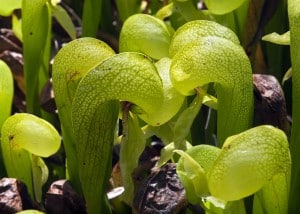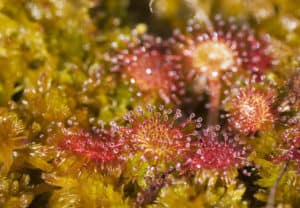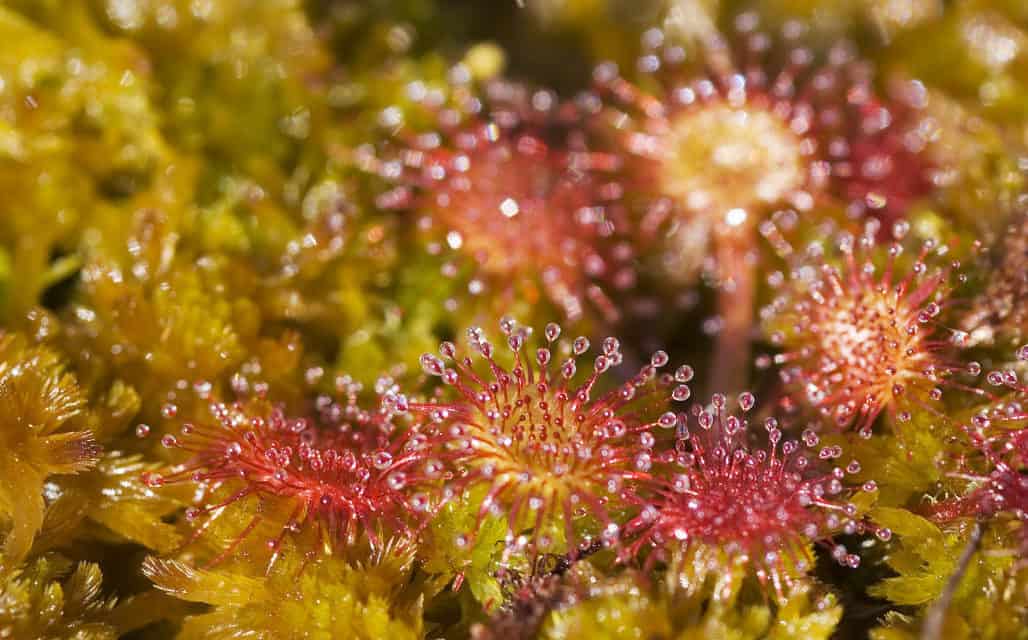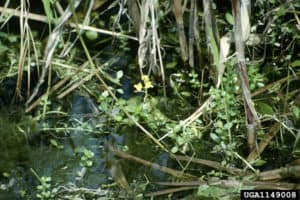By Melissa Wynn
North of Quincy, Ca just off of Blackhawk Road lies a lovely alpine valley shaped like a butterfly. Passers by would never dream that this lush and boggy area in the mountains would be home to four species of carnivorous plants. Aren’t those from a few tropical places and the movie “Little Shop of Horrors”? Apparently not.
Amateur botanist Rebecca Austin, who was born right here in Plumas County, studied the carnivorous, or more accurately the insectivorous plants of Butterfly Valley from 1875-1877. Her studies are still cited today and another wildflower of Butterfly Valley, the Austin’s Skullcap, is named in her honor. Rebecca’s favorite and most studied bug eating plant was the rare California Pitcher Plant also known as the Cobra Lily.
[media-credit name=”bigstock photo” align=”alignleft” width=”300″] [/media-credit]The name Cobra Lily comes from the shape of the Pitcher Plant’s many stalks that look like a Cobra with hood open and prepared to strike. The head of the cobra is used to trap insects that the plant digests to supplement its diet, gaining nutrients from the bugs that are lacking in the soil. Reddish-orange streaks on the hood are a map for insects to the nectar. California Pitcher Plants produce an abundance of nectar and the further into the hood the insects travel the thicker and juicier the nectar. Eventually the doomed crawlers slip on the waxy surface and fall into the fluid filled tube or “pitcher” where they drown and are digested. Downward pointing hairs in the plant from hood to pitcher keep the bugs from climbing back out. Fascinating.
[/media-credit]The name Cobra Lily comes from the shape of the Pitcher Plant’s many stalks that look like a Cobra with hood open and prepared to strike. The head of the cobra is used to trap insects that the plant digests to supplement its diet, gaining nutrients from the bugs that are lacking in the soil. Reddish-orange streaks on the hood are a map for insects to the nectar. California Pitcher Plants produce an abundance of nectar and the further into the hood the insects travel the thicker and juicier the nectar. Eventually the doomed crawlers slip on the waxy surface and fall into the fluid filled tube or “pitcher” where they drown and are digested. Downward pointing hairs in the plant from hood to pitcher keep the bugs from climbing back out. Fascinating.
 Like the California Pitcher Plant, the Round Leaved Sundew is an insect trapper of Butterfly Valley. Sundews however don’t drown their prey. They catch it in red hairs on the surface of their leaf blades. These deadly hairs secrete a sticky, yet irresistible, glutinous substance that resembles thick drops of early morning dew. Insects are caught unaware when they land for a sweet sip of nectar only to find they are stuck in their lunch.
Like the California Pitcher Plant, the Round Leaved Sundew is an insect trapper of Butterfly Valley. Sundews however don’t drown their prey. They catch it in red hairs on the surface of their leaf blades. These deadly hairs secrete a sticky, yet irresistible, glutinous substance that resembles thick drops of early morning dew. Insects are caught unaware when they land for a sweet sip of nectar only to find they are stuck in their lunch.
As the Round Leaved Sundew’s quarry struggles to escape the leaves fold around it sealing its fate. Such violence from such a small and pretty plant.
Two Species of Bladderwort also thrive in Butterfly Valley. Both the Lesser Bladderwort and the Greater or Common Bladderwort make their living feeding on the underwater organisms of the marshy bogs. Bladderworts grow with highly divided, underwater leaf-likestems with literal hair triggers and numerous small “bladders”. These seed like bladders are actually elaborate traps by which tiny aquatic inhabitants meet their demise. When a bit of tiny prey brushes hairs near a bladder pore, a tiny door in the pore opens inward and water rushes in, carrying the intended meal with it. The door quickly slams shut trapping the victim to be digested by enzymes inside. The trapping process takes a barely detectable 1/460 second. When larger organisms, such as mosquito larvae, get caught in the door it is repeatedly triggered and the larvae is then digested little by little. What a way to go. Butterfly Valley was designated as a botanical area in 1976 to preserve the amazing botanical diversity of this wildflower paradise. Over 500 species of plant life thrive here including several species of ferns and orchids. Blooming season lasts all summer long so wildflower lovers are never too late to catch the colors.
The 500 acre Butterfly Valley Botanical Area is managed and protected by the US Forest Service. Removal of any plant life is strictly forbidden as is planting of any non- native species. Visitors are welcome to carefully view the botanical bounty during the summer months.
Here are some awesome directions from fs.fed.us to guide you on your quest for the the carnivorous plants of Butterfly Valley Botanical Area.
Directions: From Quincy, California, go 3.5 miles North on Hwy 70 to Blackhawk Road (0.3 miles North of Mt. Hough Ranger District Office). At junction of Hwy 70 and Blackhawk Road, set odometer to zero. The mileages below indicate noteworthy stops along the way. Be sure to stay on the main road as you travel west on Blackhawk Road.
1.4-Begin gravel forest road #25N12. Stay on 25N12 as you pass 25N13 junction at mile 3.1 and 25N46 at mile 3.5.
3.9-Fern Glen: Immediately after passing the sign “Butterfly Botanical Area”, Fern Glen is on your left. This is the best spot to view fern diversity in the botanical area. Seven kinds of orchids have been found here.
4.8-Rubble Gap: At this point there is a road cut through a reddish rock and soil formation. Another area of fern diversity is adjacent. The attractive Palm Tree Moss grows 10 feet upstream from the culvert.
5.3-Turn right onto Bog Road (forest road #25N47).
5.4-Beargrass Glade – follow trail 300 yards west up an old logging road to a small trickle of water. As you follow the ravine back down towards Bog Road search for small numbers of bear grass plants along with several species of lilies.
6.0-Darlingtonia Bog. The population of California pitcher plants is found on both sides of the road. On the east side of the road is the Sweetwater Marsh, which slopes gradually downward and southeastward to Pond Reservoir. Sundews are found in this marsh, hidden under taller vegetation in saturated areas. The pond, located 200 yards east of the road at the downstream end of the Sweetwater Marsh, is home to the bladderworts.
Retrace your path to return to Highway 70.
bss.sfsu.edu
fs.fed.us
audubonguides.com













